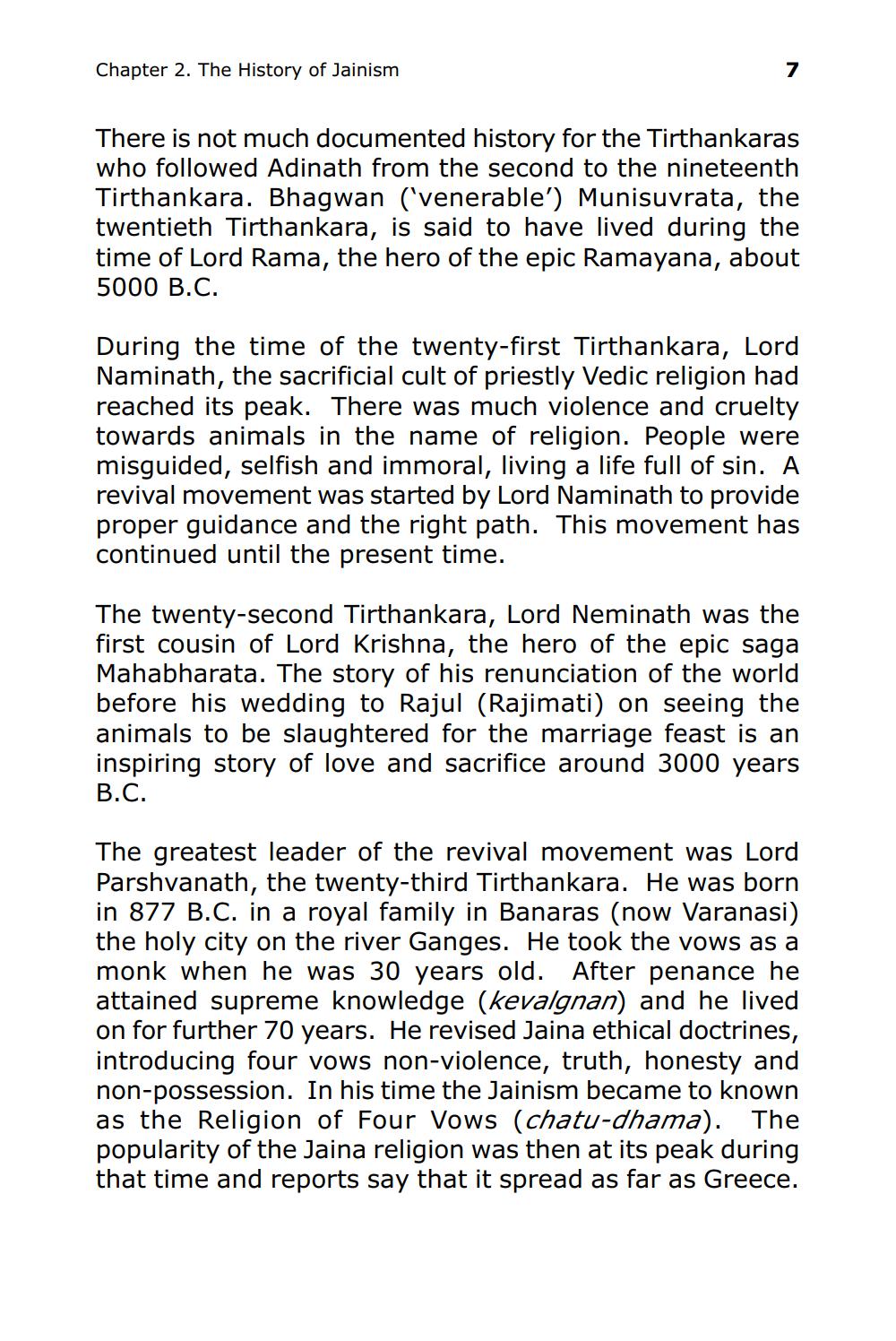________________
Chapter 2. The History of Jainism
There is not much documented history for the Tirthankaras who followed Adinath from the second to the nineteenth Tirthankara. Bhagwan ('venerable') Munisuvrata, the twentieth Tirthankara, is said to have lived during the time of Lord Rama, the hero of the epic Ramayana, about 5000 B.C.
During the time of the twenty-first Tirthankara, Lord Naminath, the sacrificial cult of priestly Vedic religion had reached its peak. There was much violence and cruelty towards animals in the name of religion. People were misguided, selfish and immoral, living a life full of sin. A revival movement was started by Lord Naminath to provide proper guidance and the right path. This movement has continued until the present time.
The twenty-second Tirthankara, Lord Neminath was the first cousin of Lord Krishna, the hero of the epic saga Mahabharata. The story of his renunciation of the world before his wedding to Rajul (Rajimati) on seeing the animals to be slaughtered for the marriage feast is an inspiring story of love and sacrifice around 3000 years B.C.
The greatest leader of the revival movement was Lord Parshvanath, the twenty-third Tirthankara. He was born in 877 B.C. in a royal family in Banaras (now Varanasi) the holy city on the river Ganges. He took the vows as a monk when he was 30 years old. After penance he attained supreme knowledge (kevalgnan) and he lived on for further 70 years. He revised Jaina ethical doctrines, introducing four vows non-violence, truth, honesty and non-possession. In his time the Jainism became to known as the Religion of Four Vows (chatu-dhama). The popularity of the Jaina religion was then at its peak during that time and reports say that it spread as far as Greece.




